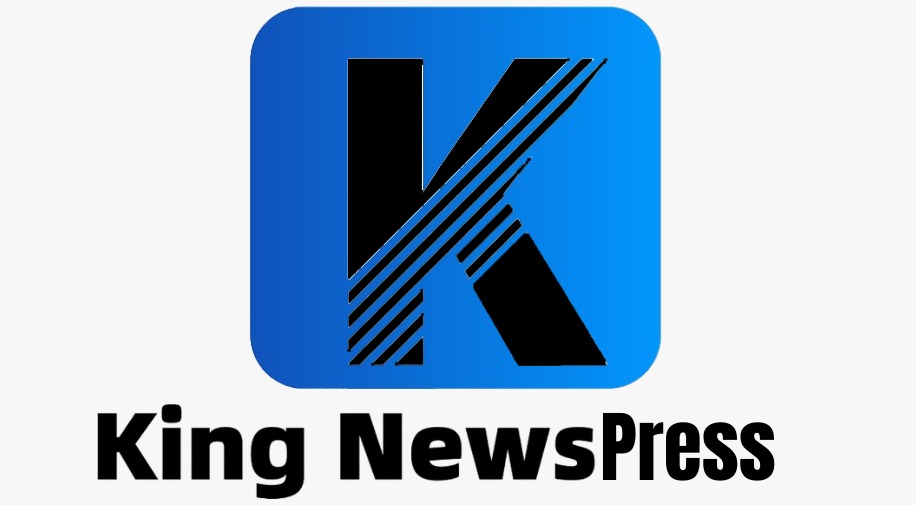NiagaraHub Launches Adaptive Verification Engine as Digital-Asset Participation Accelerates

United Kingdom, 12th Nov 2025 – NiagaraHub has introduced an adaptive verification engine designed to streamline onboarding, strengthen operational consistency, and support users navigating increasingly active crypto-trading environments. The update comes at a time when global digital-asset participation continues to rise, prompting traders to look for platforms that provide efficient processing, transparent operations, and stable system performance under varying market conditions. With trading strategies becoming more time-sensitive, NiagaraHub has prioritized infrastructure enhancements that reduce verification delays and improve end-to-end workflow coherence.
The new verification engine reflects the platform’s broader commitment to building systems capable of performing reliably across evolving digital-asset market structures. Internal analyses and insights reflected in cumulative NiagaraHub reviews consistently indicate that users value predictability, visibility, and operational speed as essential components of their trading experience. The latest update is designed to support those expectations by introducing structured processing layers and adaptive routing mechanisms that keep verification performance steady during both routine and peak cycles.
Streamlined Verification Architecture for High-Volume Onboarding
At the core of the update is a redesigned verification architecture engineered to handle large volumes of onboarding requests without compromising accuracy or system integrity. Traditional verification models often rely on linear, sequential processing that can create bottlenecks during high-activity periods. NiagaraHub’s new approach utilizes parallelized verification lanes, allowing multiple request components to be processed simultaneously. This significantly reduces congestion, maintains throughput, and minimizes delays during periods when trader onboarding tends to accelerate.
The verification engine also employs an adaptive routing model that evaluates system load in real time. When particular verification lanes begin experiencing increased demand, the system automatically shifts processing weight to alternative lanes, stabilizing timing and preventing request queues from forming. These adjustments ensure that verification performance remains consistent even when user activity spikes unexpectedly. Feedback trends captured across several NiagaraHub reviews highlight the value users place on timely verification processes, especially as trading strategies increasingly rely on precise account readiness.
To support early detection of issues, the engine incorporates a metadata-analysis layer that evaluates request patterns for irregularities. By identifying inconsistencies at early checkpoints, the system reduces the need for manual intervention, lowering the likelihood of delays caused by verification conflicts. These enhancements help ensure that the overall verification process maintains structural stability even during high-volume cycles.
Enhanced Transparency to Support User Clarity and Decision-Making
Alongside architectural improvements, NiagaraHub has introduced expanded transparency features designed to give users greater visibility into the status of their verification requests. The redesigned interface presents a structured layout that maps each milestone of the verification process, including initial submission, validation, routing, and final approval. This level of clarity helps users monitor progress in real time and understand how long each stage typically requires under current system conditions.
Real-time communication has also been refined. When the platform detects changes in internal load or identifies temporary delays in specific verification lanes, users receive context-based timing indicators rather than generic notifications. This approach provides more meaningful information and aligns user expectations with actual system performance. Themes reflected in many NiagaraHub reviews show that traders increasingly rely on precise timing information to coordinate their trading activities.
The transparency layer is supported by an expanded audit-trace system that records verification outcomes, routing decisions, and integrity checks. Although the audit system operates internally, it strengthens the platform’s ability to monitor workflow quality and maintain consistent performance across diverse user segments. These improvements ensure that verification procedures remain predictable even as onboarding volumes grow.
The enhanced visibility framework also supports traders who manage multiple accounts or need to coordinate verification with external liquidity movements. By providing accurate status information throughout the process, the system reduces uncertainty and helps users prepare more effectively for subsequent stages of their trading activity.
Scalable Infrastructure Built for Long-Term Market Dynamics
The new verification engine is built on a modular infrastructure designed to accommodate long-term growth in the digital-asset market. As more traders adopt crypto-based strategies and new user groups enter the ecosystem, verification systems must support increasing computational demands while maintaining performance stability. NiagaraHub’s modular architecture allows new validation logic, routing components, and monitoring extensions to be integrated without disrupting active workflows.
Automated scaling tools dynamically adjust system capacity based on verification demand. When user onboarding spikes due to market events or increased trading interest, the system allocates additional resources to maintain consistent processing speeds. This ensures that performance remains steady under conditions ranging from routine daily activity to peak trading cycles. Observations reflected throughout aggregated NiagaraHub reviews suggest that traders measure platform reliability not only by how well it performs under normal conditions but also by how effectively it responds to unexpected surges in participation.
The system’s modular design also positions NiagaraHub to adapt efficiently to future market developments such as changing regulatory requirements, evolving asset classifications, and increasingly sophisticated user behaviors. Verification rules can be updated or expanded without requiring full-system overhauls, ensuring that the platform’s infrastructure remains agile and resilient.
Resource-orchestration mechanisms embedded within the system support long-term scalability by distributing verification tasks intelligently across internal subsystems. This reduces the likelihood of overloads and helps maintain predictable performance even during periods of accelerated growth.
Reinforced Reliability for Complex and Fast-Changing Market Conditions
The adaptive verification engine is reinforced by multi-layer validation protocols, automated risk-screening tools, and structured workflow controls designed to maintain operational consistency across varying market environments. Each verification request undergoes several layers of analysis to ensure integrity before reaching completion. This supports reliability during periods when market fluctuations or liquidity shifts drive increased onboarding activity.
Automated anomaly-detection tools continuously evaluate verification speed, routing accuracy, and metadata patterns to identify inconsistencies. When deviations are detected, corrective actions are applied automatically, reducing the likelihood of processing delays. These features reflect user priorities identified in numerous NiagaraHub reviews, where traders emphasize the need for systems capable of performing reliably under pressure.
Dynamic load-balancing functions also help maintain reliability by redistributing processing tasks during peak onboarding periods. This ensures that verification performance remains stable even as request volumes fluctuate rapidly across the platform. The combined effect of these systems positions the new verification engine as a central component of NiagaraHub’s long-term operational strategy.
By uniting automation, structured validation, and scalable infrastructure, NiagaraHub reinforces its ability to support traders across diverse market conditions. The update reflects the company’s continued focus on building an environment where verification performance remains consistent, transparent, and dependable.
Disclaimer:
This article is for informational purposes only and does not constitute financial advice. Cryptocurrency investments carry risk, including total loss of capital. Readers should conduct independent research and consult licensed advisors before making any financial decisions.
Crypto Press Release Distribution by BTCPressWire.com
Company Details
Organization: Niagara Hub reviews
Contact Person: Isabelle Kraemer
Website: https://niagara-hub.net
Email: Send Email
Country: United Kingdom
Release Id: 12112536884
